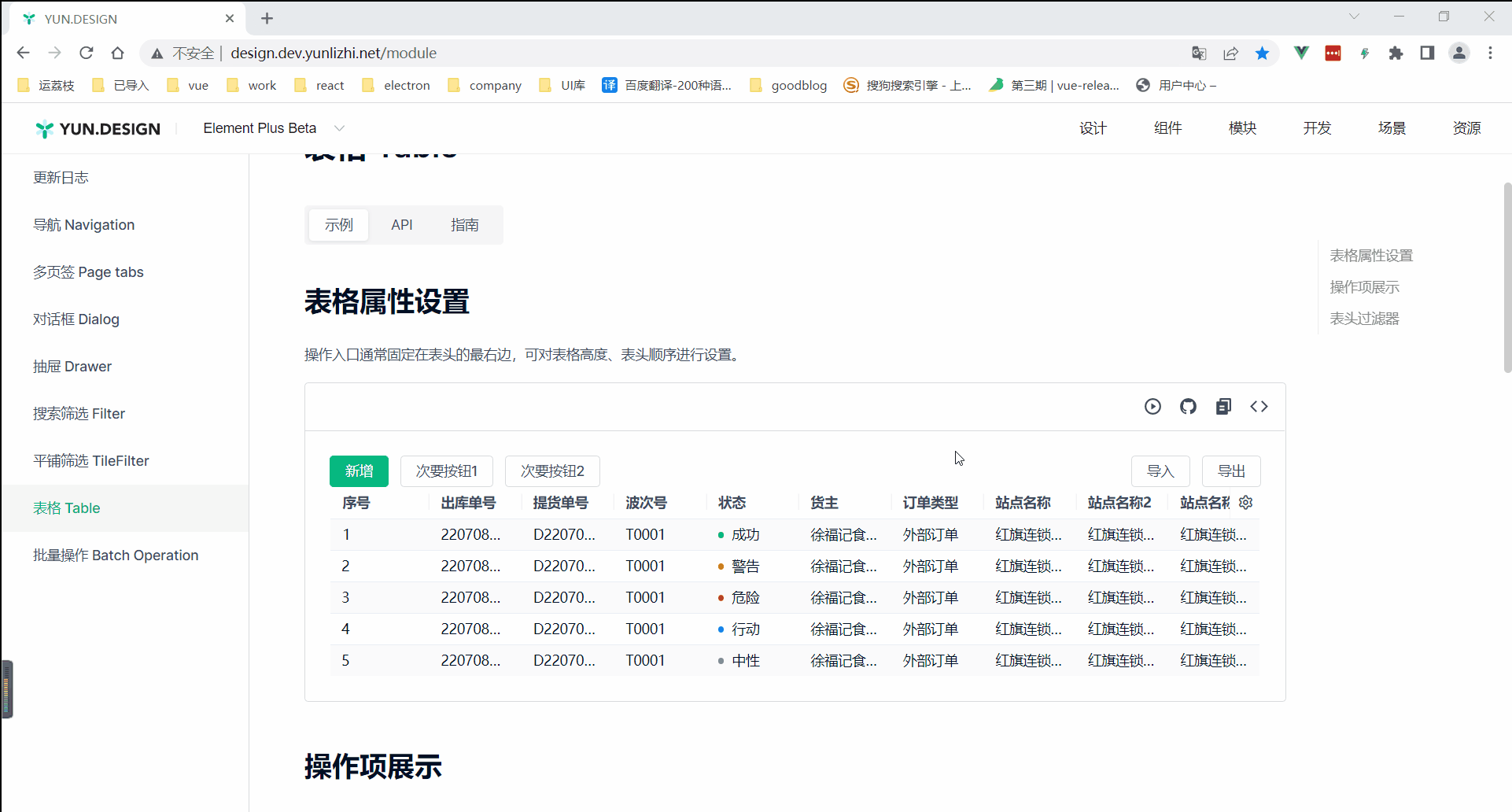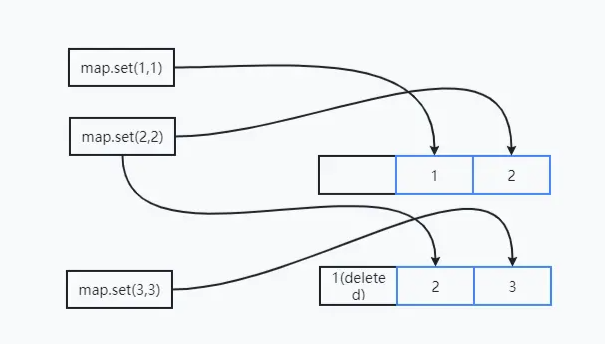- A+
目标:
排序后的表格列,页面刷新或者用户重新登录后,能够保持之前的操作排序
完成效果:

解决方案:
利用localstorage对排序后的表格列属性进行存储,页面刷新或者用户重新进入该页面时都先从localstorage中读取
1.存储方式:localstorage(key,value)
key - 表格增加配置属性tableHeaderKey,以当前路由的path+tableHeaderKey来做key
value - 排序后的属性列数组(defaultKeys-所有属性列key,selectedKeys要显示的key,tableSize表格高度)只存key,减少存储空间
2.存储时机:
配置有tableHeaderKey并且showTableSetting开启,进入页面就读取,没有则先存一份
3.移除或新增列的情况:
(1)在后续需求迭代中,以前表格的字段列可能会增加或者减少,需要将新的字段列和localstorage中的旧有字段列进行diff,如果存在删除的字段,则移除,存在新增字段则自动追加。
(2)或者强制更新,通过读取发版的版本号,如果发版的版本号大于旧的版本号,则清空localstorage。
升级方案:
针对localstorage缓存太多的情况,会采用LRU算法对缓存进行优化。
LRU全称为Least Recently Used,即最近使用的。针对的是在有限的内存空间内,只缓存最近使用的数据(即get和set的数据),超过有限内存空间的数据将会被删除。
大致思路:

简单实现思路
class LRUCache { data = new Map(); // 数据map constructor(length) { if (length < 1) throw new Error('长度不能小于1') this.length = length } set(key, value) { const data = this.data; // 如果存在该对象,则直接删除 if (data.has(key)) { data.delete(key); } // 将数据对象添加到map中 data.set(key, value); if (data.size > this.length) { // 如果map长度超过最大值,则取出map中的第一个元素,然后删除 const delKey = data.keys().next().value data.delete(delKey); } } get(key) { const data = this.data; // 数据map中没有key对应的数据,则返回null if (!data.has(key)) return null; const value = data.get(key); // 返回数据前,先删除原数据,然后在添加,就可以保持在最新 data.delete(key); data.set(key, value); return value; } } const lruCache = new LRUCache(2); lruCache.set('1', 1); // Map(1) {1 => 1} lruCache.set('2',2); // Map(2) {1 => 1, 2 => 2} console.log(lruCache.get('1')); // Map(2) {2 => 2, 1 => 1} lruCache.set('3',3); // Map(2) {1 => 1, 3 => 3} console.log(lruCache.get('2')); // null lruCache.set('4',4); // Map(2) {3 => 3, 4 => 4} console.log(lruCache.get('1')); // null console.log(lruCache.get('3')); // Map(2) {4 => 4, 3 => 3} console.log(lruCache.get('4')); // Map(2) {3 => 3, 4 => 4} map结合localstorage实现存储操作用例
let contacts = new Map() contacts.set('Jessie', {phone: "213-555-1234", address: "123 N 1st Ave"}) contacts.set('Hilary22',333) // undefined contacts.set('Hilary', {phone: "617-555-4321", address: "321 S 2nd St"}) //contacts.get('Jessie') // {phone: "213-555-1234", address: "123 N 1st Ave"} console.log(contacts) console.log(JSON.stringify(Array.from(contacts.entries()))) window.localStorage.setItem('test',JSON.stringify(Array.from(contacts.entries()))) //console.log(new Map(JSON.parse(window.localStorage.getItem('test')))) contacts = new Map(JSON.parse(window.localStorage.getItem('test'))) onsole.log( contacts ) 封装storage
export default { setItem(key, item) { let stringifyItem; try { stringifyItem = JSON.stringify(item); } catch (error) { stringifyItem = ''; } finally { window.localStorage.setItem(key, stringifyItem); } }, getItem(key) { let item; try { const stringifyItem = window.localStorage.getItem(key); item = JSON.parse(stringifyItem); } catch (erorr) { item = null; } return item; }, removeItem(key) { window.localStorage.removeItem(key); }, }; 后续升级
达到一定量级,如果要做针对用户层面的表格列操作缓存,会考虑结合后端存储使用indexDb存储方式,支持G级别大小。




